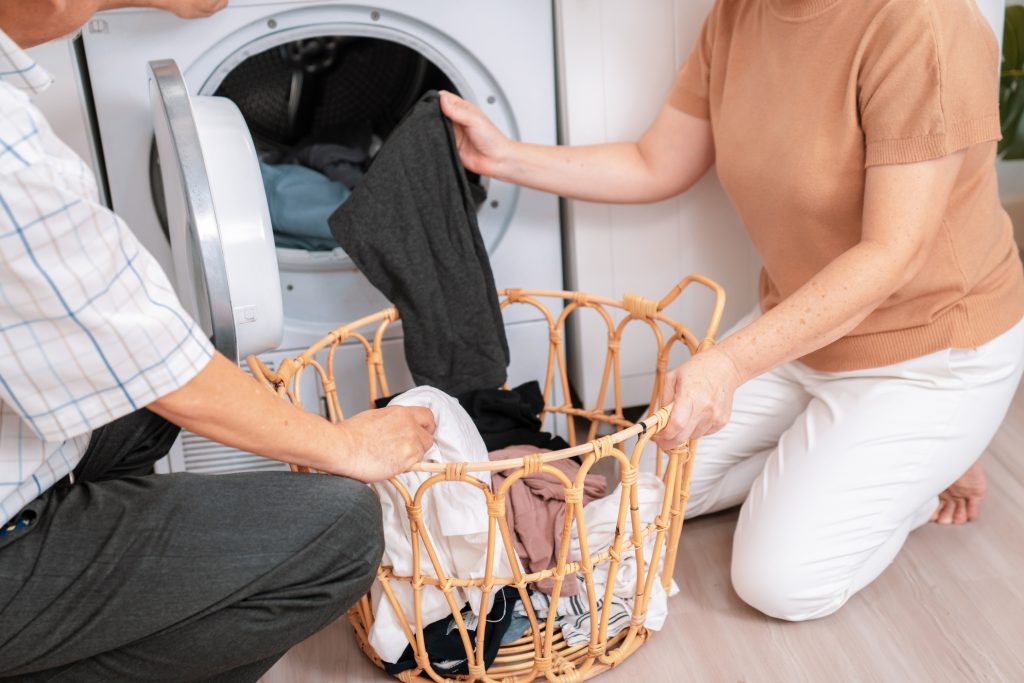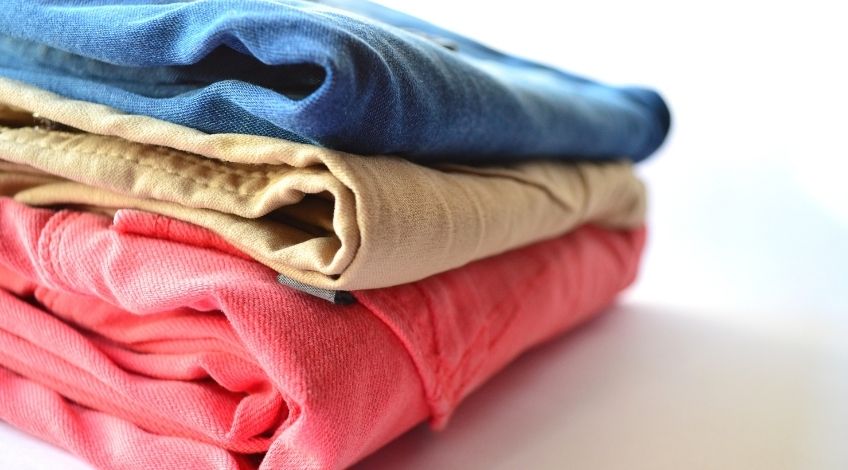
Different Types Of Washing Machine Explained
Whether your current washing machine needs replacing or you are looking to buy your first washing machine, you’ve found the right article. With so many different makes and models, not to mention different styles of washing machine to choose from it can be a challenging task.
Which is where this article comes in, we will navigate through the different types of washers available as well as look at some of the main features. So whether you look forward to the prospect of searching for a new washing machine, or whether you want to choose a new appliance as soon as possible, keep reading.
By the end of this article, you’ll be equipped with all of the knowledge you need to go out and buy the washing machine that best suits your needs.
What Are The Different Types Of Washing Machines?

You might be surprised to learn that there are 8 types of washing machines available on the UK market. They’re all different in their design but are all designed to get your clothes clean.
Freestanding Washing Machines
These are the most popular type of washer in the UK mainly because they can be placed almost anywhere (as long as they’re close to a power supply, water supply and a drain). Freestanding washing machines are also relatively easy to move from home to home if you’re planning on moving in the near future.
Freestanding washers tend to mainly be front loaders (models that have the door situated on the front of the appliance where you put the laundry in).
One of the good things about freestanding washers is their longevity (as long as they’re treated properly).
What Are The Pros & Cons Of Freestanding Washing Machines?
Let’s take a look at the main advantages and disadvantages of freestanding washing machines.
Freestanding Washing Machine Pros
The main advantages of freestanding washing machines include;
- Many Are Energy Efficient
Many of the modern freestanding washers have been designed to be energy and water efficient, you’ll need to check the specifications on the model you plan on buying for more details. - A Wide Range Of Models Available
With so many manufacturers producing freestanding washing machines, there is a huge choice of features, functions, colours and design. - A Wide Range Of Drum Sizes Available
The drum size dictates how much weight of laundry can be washed in the appliance. Washing machine drum sizes range from 6 to 11 kg which means you can buy an appliance that will fit your families needs. - A Large Variety Of Features Available
Every manufacturer adds various unique features that may or may not be important to you. Features like half load, delicate wash, gentle cycle, etc, and many more besides. - Easy To Relocate
Freestanding washers are relatively easy to relocate if you move home. There are no cupboards to dismantle etc.
Freestanding Washing Machine Cons
The disadvantages of freestanding washing machines are;
- Always In Permanent Eye View
The main problem with freestanding washing machines is they’re always in full view. Which means that unlike integrated washers which are hidden behind cupboard doors, freestanding washers are permanently on display. - Those With Extra Features Can Be Expensive
As with most things in life, the more features fitted as standard on the washer, the higher the purchase price. We recommend either choosing a washing machine with just the programmes and cycles you’re likely to actually use or wait for the appliance you want to be featured in a sale.

Integrated Washing Machines
Integrated washing machines fit snugly into a cupboard in the kitchen, and once the cupboard door is closed, there’s no indication that there’s a washer in the room at all.
You often find integrated washing machines fitted in new homes along with integrated fridges, freezers and dishwashers.
What Are The Pros & Cons Of Integrated Washing Machines?
As with all things there are positives and negatives associated with integrated washers.
Integrated Washing Machine Pros
The advantages of integrated washing machines include;
- Hidden Out Of Sight
If you want your kitchen to have a sleek finished look, an integrated washing machine will probably suit you best. The appliance is completely hidden behind a cupboard door and is invisible unless that door is open. - Typically Quieter Than Freestanding Washers
Integrated washing machines are very often much quieter than freestanding models. Much of this noise reduction is due to the cupboard and door dampening the sound.
Integrated Washing Machine Cons
The main disadvantages of integrated washers include;
- Less Choice
Freestanding washing machines are the most popular which means there is far more choice when it comes to buying a freestanding appliance. As integrated washers are less popular, there tends to be less choice which means your options are limited. - Cost More To Buy
Integrated appliances generally cost more than freestanding alternatives and this is also true with integrated washing machines. - Cost More To Install
As they need to be fitted inside a cupboard, integrated washers tend to have higher installation costs than freestanding models. - Typically Have A Smaller Load Capacity
Integrated washers will almost certainly have a smaller load capacity than a freestanding washer.
Semi-Integrated Washing Machines
Semi-integrated models tend to work in a similar way to fully integrated washers except the front of the appliance is visible at all times. The body of the machine is integrated into a cupboard in the kitchen, but the door and control panel are on display permanently.
What Are The Pros & Cons Of Semi-Integrated Washing Machines?
Let’s take a look at the advantages and disadvantages of semi-integrated washers.
Semi-Integrated Washing Machine Pros
The main advantages of semi-integrated washing machines are;
- It’s Easy To Use The Controls
As the controls are constantly visible, it is easier to use them on a semi-integrated washer when compared to a fully integrated washer. - Slightly Less Noisy Than Freestanding Washers
As most of the body of the appliance is concealed within a cupboard, semi-integrated washers tend to be less noisy than freestanding models.
Semi-Integrated Washing Machine Cons
The disadvantages of semi-integrated washing machines include;
- Limited Choice
As semi-integrated washers are not that popular, there is only a small selection to choose from. - Difficult To Install
Semi-integrated washers tend to be difficult to install, which means installation costs will be far larger than with a freestanding model. - Only Fit Smaller Wash Loads
Semi-integrated washers tend to have smaller drum capacities than freestanding models.

Slimline Washing Machines
Slimline washing machines tend to be thinner than standard washers. They are designed to fit in spaces that are not as deep as standard machines. They tend to have a lower capacity than full size washers but can be the difference between owning a washing machine or not.
What Are The Pros & Cons of Slimline Washing Machines?
Let’s look at the advantages and disadvantages of slimline washers.
Slimline Washing Machine Pros
The main advantages of slimline washers include;
- Can Fit in The Narrowest Of Kitchens
Slimline washers are typically 15 to 20 cm less deep than standard washers. This can be advantageous if you have a particularly narrow galley style kitchen.
Slimline Washing Machine Cons
The disadvantages of slimline washers are;
- Small Wash Load Capacity
The drum size on slimline washers tends to be small which limits the load size capacity. Many slimline washers can only wash around half the capacity of a regular washer.
Other than those 2 points, slimline washers are pretty much the same as other types of washing machines.
Top Loader Washing Machines
Top loaders aren’t really that popular here in the UK which means there are not so many to choose from. They are more popular in the US where homes tend to be larger as top loaders tend to take up more space than frontloaders.
What Are The Pros & Cons Of Top Loader Washing Machines?
Let’s take a look at the advantages and disadvantages of Top Loader washers.
Top Loader Washing Machine Pros
The advantages of top loader washing machines are;
- Shorter Running Times
Many top loaders have shorter running times than many of the programmes on a freestanding washer. - Clothes Can Be Added Mid-Cycle
Due to the design, it is possible to add items to the wash mid-cycle without causing a flood. - Better For Those That Find Bending Problematic
As the name suggests, the laundry is loaded through the top of the appliance. This means there’s less bending involved when placing laundry into a top loader. - Not As Wide As Frontloaders
Top loaders tend to be narrower than front loaders which means they can often be fitted into smaller spaces. - Many Can Take Larger Loads
As there is no central drum to damage, top loaders can often wash more weight of laundry at one time than front loaders.
Top Loader Washing Machine Cons
The main disadvantages of top loader washing machines include;
- Can Be Extremely Loud
Top loader washing machines tend to be far louder when running than frontloaders. - Often Vibrate Significantly
Part of their noise is composed of the heavy vibrations that emanate from top loaders. - Can’t Be Fitted Under Worktops
As you load and unload top loaders from the top, they cannot be fitted under worktops. - Often Need Moving To Use
You will typically need to move a top loader to use it away from the wall for example. - Need More Frequent Cleaning
Top loaders need to be cleaned far more frequently than frontloaders. - Difficult To Store
Unlike front loaders that can have a tumble dryer stacked on top, this is not possible with a top loader for obvious reasons.

Washer-Dryers
If space is limited in your home, a washer dryer might be the perfect solution. This is because a washer dryer is a washing machine and tumble dryer all in one unit.
There’s no need to transfer wet laundry from the washer to the dryer because it’s already there.
What Are The Pros & Cons Of Washer-Dryers?
Let’s take a brief look at washer-dryers and highlight the pros and cons.
Washer-Dryer Pros
The main advantages of washer-dryers include;
- Can Work Out Cheaper Than Buying 2 Separate Appliances
In some cases, it can cost less to buy a washer-dryer than buying two separate appliances. - Space Saving
You only need to find the space for one appliance. In many homes this can be the only way to fit a tumble dryer in at all. - No Need To Transfer Wet Laundry From Appliance To Appliance
As the clothes are washed and dried in the same place, you will reduce the amount of wet washing you need to handle.
Washer-Dryer Cons
The main disadvantages of washer-dryers are;
- Typically Less Energy Efficient
Due to the way they are designed, washer-dryers tend to be less energy efficient compared to separate washing machines and tumble dryers. - Often Have Limited Functionality
In many cases, if the washer-dryer has a good washing functionality, the drying isn’t up to much and vice versa. - When The washer Is Out Of Order, You Can’t Use The Dryer & Vice Versa
Due to the design of washer-dryers if one part malfunctions, the other part cannot be used until a repair has been made. - Lower Drying Capacity Than Wash Capacity
Washer-dryers typically can dry half as much as they can wash. Which means unless you only wash half loads, you still have to remove a load of wet washing and dry it in two halves.
Stackable Washing Machines
If space is at a premium in your home, and you want to benefit from a full size washer and a full size dryer you might want to consider this option. Instead of compromising on the load size you can dry compared to the amount you can wash, consider stacking your appliances.
You will need to check with the manufacturer that your appliances can be stacked. Typically both appliances need to be made by the same manufacturer.
You should stack the tumble dryer on top of the washing machine because washers tend to be far more heavy than dryers. Once you’re sure it is safe for you to stack your dryer on top of the washer, you will need some sort of stacking kit.
SEE ALSO: Can You Stack A Tumble Dryer On Top Of A Washing Machine
What Are The Pros & Cons Of Stackable Washing Machines?
Let’s look at the advantages and disadvantages of stackable washing machines.
Stackable Washing Machine Pros
The main advantages of stackable washers include;
- Space Saving
Stacking a tumble dryer on top of a washing machine takes up no more space in the room than just placing a washing machine in that room. As long as you have the height clearance you will be saving space in your home. - Keeps Your Laundry All In One Place
The laundry can literally be removed from the washing machine, and placed directly into the tumble dryer. This means you don’t need to transport wet washing around your home.
Stackable Washing Machine Cons
The main disadvantage of a stackable washing machine is:
- Can Pose A Danger If Incorrectly Stacked
If you don’t use the correct stacking kit to fit your dryer on top of your washer, it can become a hazard. This is because when either appliance is running they cause a certain amount of vibration. This vibration could dislodge the dryer and allow it to fall off the washer.
Portable Washing Machines
The last type of washing machine is the portable washer. These are ideal for those with really limited space or those that travel a lot and own a campervan. If you only ever get small wash loads, a portable washer might be all you need.
What Are The Pros & Cons Of Portable Washing Machines?
Let’s look at the advantages and disadvantages of portable washing machines.
Portable Washing Machine Pros
The main advantages of portable washers are;
- Ease Of Use
Portable washers are easy to operate and have several control buttons for ease of use. - Lightweight
Many of these are made from plastic and are lightweight and easy to move and store away when not in use. - Small
Their compact size is a great advantage when it comes to storing the portable washer away after use. - Power Options
Many models can either be electrically powered or there’s an option to power them manually. - Eco Friendly
This manual option means the portable washer uses no energy (apart from human energy) to run, making it an eco friendly option.
Portable Washing Machine Cons
The main disadvantages of portable washers include;
- Can Have An Expensive Purchase Price
Considering their size and capacity, portable washers can be quite expensive. - Can Only Wash Small Loads
The average wash load capacity is around 1.5 to 2.5 kg on a portable washer. - Some Only Have Manual Power
There are some models that rely solely on manual power. This means you have to do all of the work yourself, there is no electrical hook up.

What’s The Best Washing Machine Type For You?
As you can see from above, there are a wide range of washing machines to choose from. To decide which is the best for you and your home there are a few factors you need to consider. Factors like;
- How Much Laundry Your Home Produces
If you live alone and don’t produce too much laundry, a portable washer might be your best choice. On the other hand, if you have a large family, you’ll almost certainly need a full size model with a large drum capacity. - How Much Space You Have For A Washer
This is always going to be a deciding factor. Those of us that live in small homes will always be looking for space saving appliances. If this is you, a washer-dryer might well be the solution. - How Environmentally Friendly You Are
In many cases, freestanding washers tend to be the most eco-friendly of the lot. However, manually operated portable washers will always be the most energy efficient. - Whether You Want The Washer Visible Permanently
If you’re bothered about seeing the washing machine always on eye view in your kitchen, then an integrated model might suit you best. However, these tend to have a limited choice. - Whether Noise Levels Are Important
There are several washers available now with low noise levels. Many integrated and semi-integrated models boast that they are quiet. However, many manufacturers are conscious of noise pollution and many now have whisper quiet freestanding models too. - How Much Money You Can Afford To Spend
Many of our choices are dictated by financial constraints and this is true of washing machines too. However, there are many full size freestanding washing machines available for less than £300.
SEE ALSO: Do I Need To Run A New Washing Machine Empty First?
Frequently Asked Questions
Front loader washing machines use around 45 to 50% less energy than top loaders.
The most common type of washing machine in the UK is a front loader washing machine. This is not the case in the US where top loaders are the most common.
The smallest washing machine is the portable washing machine which can be placed on a worktop when in use and stored away in a cupboard when the wash cycle has completed.
Slimline washing machines tend to be the same width as standard washers. However, they tend to be less deep than a standard washing machine. This makes them ideal for fitting into narrow galley style kitchens.
Also, follow us on Pinterest ...



